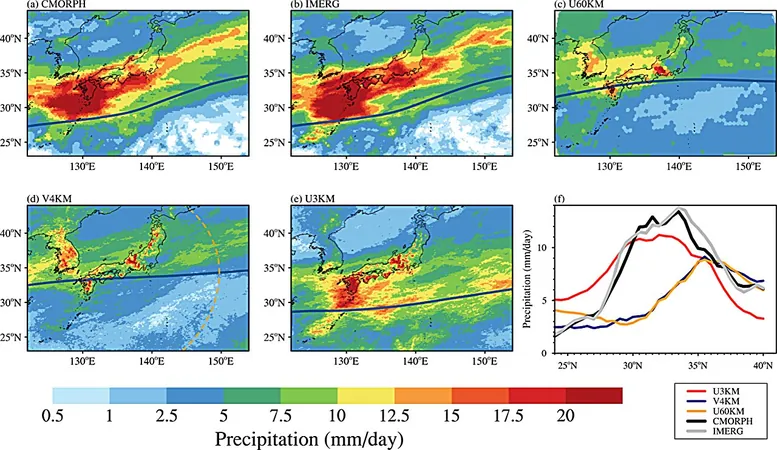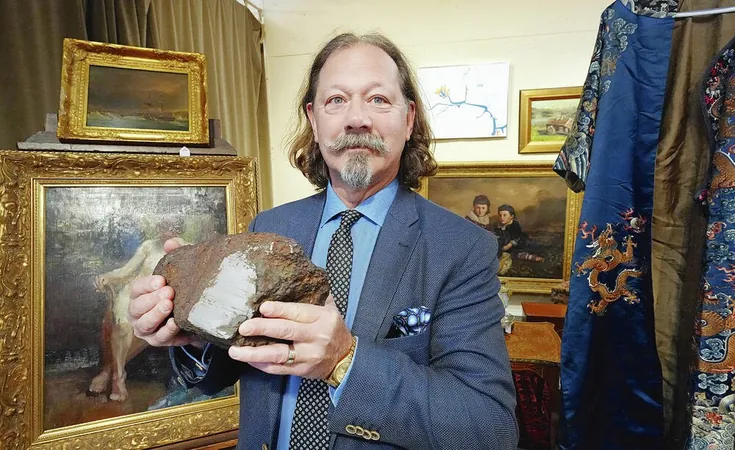
Unlocking the Mysteries of the Genome: Breakthrough Machine Learning Method Reveals Chromosomal Secrets!
2024-11-19
Author: Charlotte
Introduction
In an exciting development that could transform the landscape of precision medicine, researchers from the University of Toronto have unveiled a groundbreaking computational method capable of unveiling the intricate organization of chromosomes within human cells. This innovative approach holds the promise of enhancing our understanding of how chromosomal rearrangements can lead to the onset of various diseases, including cancer.
Research Team
Leading the charge is Professor Samin Aref from the Faculty of Engineering's Department of Mechanical and Industrial Engineering, in collaboration with Professor Philipp Maass from the Temerty Faculty of Medicine and the SickKids Research Institute. Their team's pioneering research delves into the arrangement of human chromosomes—essentially the lengthy strands of DNA that harbor our genetic codes.
Understanding Chromosomal Organization
For years, scientists grappled with limited insights into chromosomal organization within the cell nucleus. Chromosomal abnormalities are intriguingly linked to many health conditions, especially cancers. By studying the interactions between different chromosomes, the team aimed to develop hypotheses about chromosomal organization, experimentally validating their theories through advanced computational techniques and imaging.
Breakthrough Method: Signature
Their findings, published in Nature Communications, revolve around a new machine learning-based method they have named 'Signature.' This innovative method has successfully uncovered unknown genomic patterns, illuminating the complete set of genetic materials in humans.
Complementing Traditional Methods
Traditional imaging methods, such as microscopy, allow researchers to visualize chromosome arrangement and interactions, but they often face the challenge of studying one cell at a time, leading to time-consuming processes. Professor Maass likens previous attempts to distinctive colors mapping out chromosomal territories—where colors overlap indicated interactions, but the precise genomic locations of those contact points remained elusive. This breakthrough leverages cutting-edge technologies to identify inter-chromosomal contact locations with precision.
Utilizing Advanced Data Sets
Capitalizing on high-throughput chromosome conformation capture (Hi-C) data sets, the research team analyzed a staggering 62 datasets bursting with over 3.8 million potential chromosomal interactions in a single genome. Such an endeavor necessitated robust computational resources, generously provided by the Hospital for Sick Children (SickKids).
Role of Machine Learning
'Genetic data is inherently inter-related and complex,' explains Milad Mokhtaridoost, a postdoctoral fellow and lead author of the study. 'Machine learning is key to deciphering patterns from this wealth of data, leading us to adopt cross-disciplinary methods.'
Research Methodologies
The research utilized two machine learning strategies: supervised learning via a regression-based model and unsupervised learning to model chromosomal interactions as a large network. The latter technique identified genome clusters, allowing them to hypothesize the relative positions of chromosomes. Through rigorous experimentation, the team ensured that their findings were robust and reproducible, an essential step in scientific research.
Future Directions
Impressively, the study initially focused on normal genomic data, but the team's ambitions don't stop there. They are now turning their attention to cancer data sets, aiming to reveal how cancer genomes differ from healthy ones. 'Understanding the alterations in the genome organization due to disease may guide us towards groundbreaking avenues for prevention and treatment strategies,' adds Maass.
Conclusion
As the boundaries of genomic research expand, this powerful approach opens doors to potentially life-saving knowledge. Could this be the key to unlocking new therapeutic strategies for devastating diseases? The future of genetic research is looking brighter than ever!









 Brasil (PT)
Brasil (PT)
 Canada (EN)
Canada (EN)
 Chile (ES)
Chile (ES)
 España (ES)
España (ES)
 France (FR)
France (FR)
 Hong Kong (EN)
Hong Kong (EN)
 Italia (IT)
Italia (IT)
 日本 (JA)
日本 (JA)
 Magyarország (HU)
Magyarország (HU)
 Norge (NO)
Norge (NO)
 Polska (PL)
Polska (PL)
 Schweiz (DE)
Schweiz (DE)
 Singapore (EN)
Singapore (EN)
 Sverige (SV)
Sverige (SV)
 Suomi (FI)
Suomi (FI)
 Türkiye (TR)
Türkiye (TR)